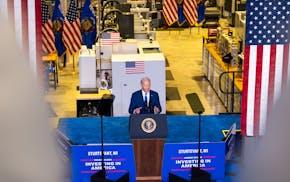Chefs inside one of Panda Express' test kitchens are making a classic regional Chinese dish called "lion's head meatballs."
Customers of Panda Express, based in Rosemead, Calif., outside Los Angeles, will never get to try the pork belly meatball dish. That's because Chef Andy Kao and his team were there to reinvent the dish for the company's 1,800 restaurants.
This is how new menu items are often developed at the world's biggest Chinese dining chain: Start with a time-honored recipe from the old world and turn it on its head until it achieves palatability at U.S. malls, airports and highway exits where Panda Express is entrenched.
The hope is to score another hit like orange chicken, which the company sold 67 million pounds of last year, accounting for one-third of Panda's sales volume.
"Consumer preferences tend to shift [and] the consistent and perpetual evolution of Panda's menu has kept it ahead of the curve in this regard," said Andrew Alvarez, an analyst for IbisWorld, a research firm.
But even as Kao and his fellow test kitchen chefs try to Americanize regional Chinese classics, they're also starting to take bigger chances — emboldened by the growing familiarity of Asian foods such as Japanese ramen, Korean barbecue and Sriracha hot sauce.
They're also taking a cue from more authentic ethnic chains like Chipotle Mexican Grill Inc. The $4.1 billion fast-casual giant also operates ShopHouse, a chain of Southeast Asian-inspired restaurants whose menu features ingredients that are obscure to many Americans, such as tamarind and green papaya.
"Our guests are evolving in their tastes and what they want," said Andrea Cherng, 37, the company's chief marketing officer and daughter of Co-Chief Executives Andrew and Peggy Cherng. "Especially now in terms of the food industry's transformation. We have to elevate our game."
China's exports and imports return to growth in April as demand improves
Bank of England expected to wait for more evidence that inflation is under control before rate cut
Union push pits the United Farm Workers against a major California agricultural business
Tiger Woods to be lone player on negotiating committee with Saudis

